HOME | ABOUT US | MEDIA KIT | CONTACT US | INQUIRE
HOME | ABOUT US | MEDIA KIT | CONTACT US | INQUIRE
Making a Difference in Life — and Lives
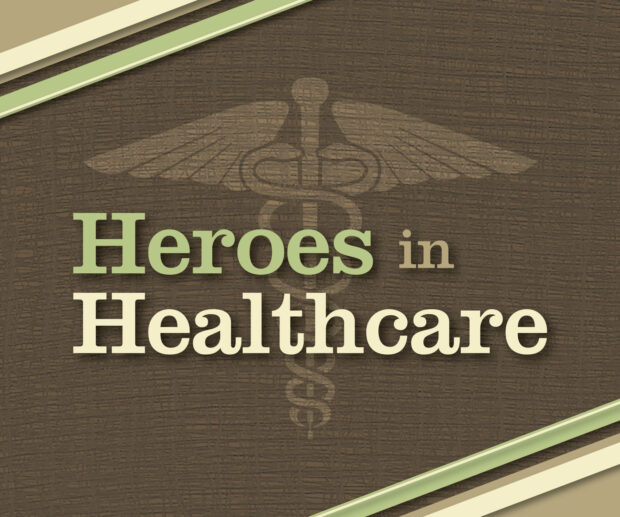
Loggers. Truck drivers. Construction workers. Lots of job settings can—and occasionally do—entail life-or-death consequences. But even those cases, the worst outcomes, thankfully, are anomalies.
Health care, somewhat incongruously, is a different story. The “life” part of it—the against-the-odds births, the breakthrough surgical advances, the miracle recoveries—makes the TV news and garners the headlines. But the simple fact is, that other part is taking place in hospitals across the nation every day. Developments there don’t yield headlines; they are the stuff of obituaries.
So health-care delivery truly is a venue where the actions of those on the front lines can determine not just the quality of life a patient can lead, but the numbers of days that might be added to that lifespan. And that is no aberration: It’s a part of the job every day for physicians and nurses, allied health professionals and aides.
Even a step removed from hands-on health-care delivery, the policy decisions from the highest offices of medical centers can impact patient interactions and outcomes. Likewise, the cheer elicited by volunteers can provide rallying points for patients locked in desperate, long-term battles with savage illness.
That’s why Ingram’s has chosen, for more than a decade, to recognize the best of what the greater Kansas City region has to offer in its health-care providers. We find that this year’s honorees are no different than nearly 200 others who have been cited before them: They bring compassion, competence and quality care to 2.4 million people living in the Kansas City metropolitan area.
In short, they make our lives better.
Please join us in saluting all of them.
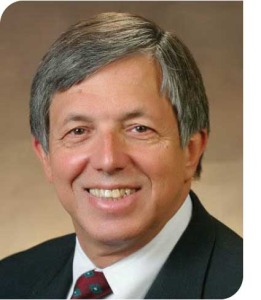 Dave Dulny
Dave Dulny
Providence Medical Center
Dave Dulny chose an accounting concentration for his MBA because “it always came easy to me conceptually.” He’s gone from the conceptual to the concrete as chief financial officer at Providence Health Center, leading a charge that took the hospital from millions in debt to in-the-black performance in less than six months of the hospital’s 2013 acquisition by Prime Healthcare Services.
That, said his boss, CEO Randy Nyp, was “a feat no one would have thought possible.” How big was the turnaround? “No one ever says it, but if Prime had not come along,” Dulny says, “I don’t know if this hospital would still be open.” But this, he says, was “a team effort—a lot of people helped with the turn-around.” A key member of that team was Prem Reddy, the physician who sits in the CEO’s office at Prime Health. “He’s dedicated his life to taking failing hospitals and turning them around,” Dulny says. The early assessment was that Providence was top-heavy, and a bevy of vice presidencies were phased out. Department management levels were collapsed, and supervisors were challenged to engage more in hands-on care. Virtually every major contract was renegotiated, often with aggressive discounting; many services were put up for competitive bid.
“One thing that has not changed is the emphasis on quality of care to the patient,” Dulny said. “There are no short-cuts at Prime. We just needed to be more efficient.”
A native of Joliet, Ill., who absorbed his work ethic from Polish-Italian parentage, Dulny earned his undergrad degree from KU, where enrollment in the ROTC gave him “structure and discipline in my life.” He started in corporate accounting with then Ernst & Ernst, now Ernst & Young, and gravitated to health-care after working with client hospitals. The reward for his career choice, is “working in a profession where you’re helping a lot of people, and helping the community.”
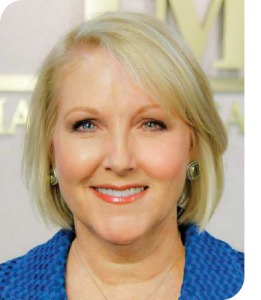 Mitzi Cardenas
Mitzi Cardenas
Truman Medical Centers
Few people in have a line-item like this one on Mitzi Cardenas’ resume: “Dancer, Chicago Lyric Opera.” If you know what it takes to achieve success as a performing artist—the countless hours of practice, seven days a week, for years on end, you know that Cardenas had what it would take to succeed in health care. “The discipline and perseverance that I learned as a dancer has helped me throughout my life in both school and in my professional career,” says the chief information officer for Truman Medical Centers.
The Dallas native, following a natural interest in continuing to learn, earned a business administration degree from Texas-Arlington, and a master’s at Troy State. Her grandmother encouraged her to explore a health-care career, but “I soon realized that I was probably better in a support role than as a hands-on caregiver,” Cardenas said.
And yet, she still is responsible for improving the outcomes of patients that might never know by name. No role in health-care administration is as charged with change as information technology, and Cardenas has been a key figure in directing TMC’s embrace of health-care IT and applications of metrics. Among the data-driven improvements, Truman has seen reductions of at least 75 percent in pressure ulcers and blood clotting often associated with hospital stays.
As a woman, she was a rarity in that field 20 years ago, and even today, she says, only about 25 percent of technology leadership roles are held by women. Perhaps the most gratifying change she has seen is the evolution of IT itself, moving from a back-office function to a strategic role supporting the business and the clinical sides. The challenge of effectively applying that technology, she says, “is really the exciting part for me—the opportunity to innovate every day to provide and implement solutions that help our caregivers do just that—deliver safe, high-quality care to everyone that walks through our doors.”
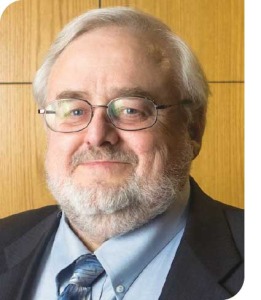 Don Harkins
Don Harkins
Rehabilitation Institute of Kansas City
Don Harkins became CEO of the Rehabilitation Institute in 2002, but his fast-track rise through the ranks began early, while still an undergrad at Centre College in his native Kentucky: “I took a job as a dishwasher in the local hospital,” Harkins deadpans, and quickly “got promoted to cook.” He’s a health-care executive who indeed has come up through the ranks—he’s been an EKG tech, a phlebotomist and a lab tech, and with the exception of a five-year stint in New York, has spent most of his post-graduate career at the institute here.
His is a career born of circumstance—“The experiences started out as jobs and became my career,” he says, as well as an emotional response after his father, a lawyer, suffered a head injury in a traffic accident. “That affected his ability to practice law at the level he was used to,” Harkins said.
From those jobs, he carved a pathway to administration. “I was intrigued with how components could be organized and coordinated to meet the needs of diverse individuals,” Harkins says. “I am not at all musical, but I liken it to being a conductor.”
As head of a specialty hospital filling a health-care niche, he sees as the biggest challenges to RIKC the continuing wave of consolidation in the sector, given that the institute offers its services to all of the hospitals in the area. “Many of our partners are going through changes right now, and it’s challenging to track and respond as those changes are happening,” he says. Following all of that with one eye, keeping careful watch over patient outcomes with the other while incorporating additional programming requires a total team effort, he says. “My firm belief is that the success of anyone in administration is directly related to building a strong team and supporting them as they do their work,” Harkins says. At the institute, he says, his work with the staff is “where the rubber meets the road, and I really share this recognition with them.”
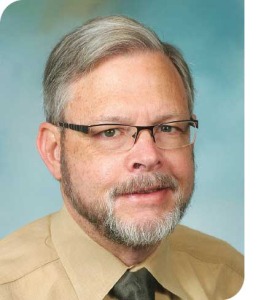 Robert Nottingham
Robert Nottingham
Olathe Family Practice/Olathe Health System
“I never considered myself a hero,” says Robert Nottingham, a physician with Olathe Family Practice. “Heroes are people who put themselves in the face of danger—the police and firefighters and military. We’re just trying to do a good job for people.” The folks at parent Olathe Health System will politely dissent, citing his long tenure as a family physician, his easy-going manner and ability to connect with patients, and his engagement with the Olathe community not just through the clinic, but through his church and service to the hometown Kansas School for the Deaf, where he donates his services for students and the athletic teams.
For this Montana native, medicine wasn’t the goal; it was the result of an educational progression: He loved anthropology, and earned degrees in that and in history at the University of Montana, his home state. “Social anthropology led to physical anthropology, which kind of led me to medicine. I thought it would be a good place for me.”
But before medical school, he needed to fulfill a commitment to military service, which included a two-year stint at Fort Riley. He followed with pre-med courses at K-State and his medical degree from KU’s School of Medicine. He went to work at an Olathe family practice in 1981, after finishing his residency at KU, and has been a fixture in town since. The appeal of family practice, Nottingham says, is in “the totality of taking care of people, rather than one little section of the body. And taking care of the entire family, I know what’s going on with the wife, the kids, so you take care of whole family, rather than one part of one person.” His work has been marked with memories of what he calls “the little things.” “I like it when I can talk people into good health. It may take five or 10 years to talk them out of smoking, but when it finally happens, you realize that, statistically, you have given that person an extra five years of life. That kind of preventive care and the social aspect of things are so important.”
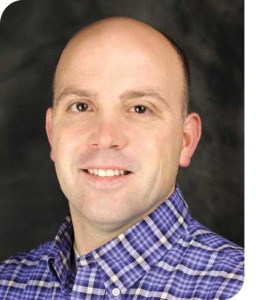 Lawrence Roccaro
Lawrence Roccaro
North Kansas City Hospital
Physical therapy, says Lawrence Roccaro, is a two-headed master. “When I first became interested in it, it was the fact that we have an opportunity as professional health-care providers to make a difference in the life of each individual we come into contact with, and that’s so rewarding,” he says. “On the flip side, there are occasions where I’m unable to assist, and that’s probably the hardest part.”
He’s a native of northeast Kansas City who is part of a small subset of those who hold degrees from then Rockhurst College, where he earned his PT degree, and as well as Rockhurst University, where he picked up a master’s degree. Roccaro got on that path after being introduced to the rehabilitation process through a relative’s treatment when he was young, and later, at the urging of a physical therapist who doubled as a football coach at the former St. Mary’s High School.
And he’s part of a group of health-care professionals who have gained renewed perspective on their work thanks to the hand of fate. “On Sept. 20, 2012, I had to have a craniotomy after suffering a stroke—it was a long six months of rehab,” Roccaro says. “When I think of that experience, I feel like I’m very fortunate to be given this honor. There are many heroes in health care, and I was fortunate to have many heroes in my life.”
Their work helped return him to the life he was relishing with his wife and three children, but it also sparked a new realization: “There is something about hope and the power of hope,” he says. Now, as with his own progression from intensive care to in-patient status to release, “what I notice the most is the feeling of hope and what my own health-care providers were giving, that feeling of hope that allowed me to carry on.
“If you have a better appreciation of that hope when you’re interacting with patients, it’s huge in helping them be successful, too.”
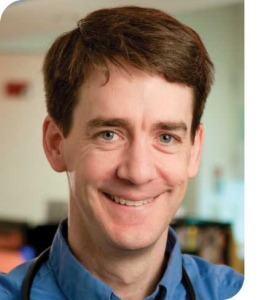 John Cowden
John Cowden
Children’s Mercy Hospital
From his Prairie Village roots, John Cowden embraced all that a true liberal-arts education offered at tiny Bowdoin College in Maine—anthropology, languages, evolutionary biology, art history, writing, philosophy and more. Then, he says,“I spent time abroad in Mexico, studying marine biology and fisheries management. Whenever I was asked about what I would do with this wide-ranging education, I said I wasn’t sure, but knew there was one thing I would never be—a doctor.”
So what is he today? A doctor, of course. Specifically, a pediatrician. “I had a simple-minded, false understanding of what doctors were,” he says, recalling how he thought of them as “cold-hearted cerebral types with poor communication skills and no creativity or spark.” That all changed in college when he started working at summer camp for children with special health-care needs. “I found the pediatricians there to be warm and interesting. I felt silly for having carried the two-dimensional doctor stereotypes for so long.”
While studying in Mexico, it hit him: “My love of children, culture, science, and service and my ability to learn and use languages made me perfectly suited to be a bilingual, culturally aware pediatrician for Mexican and other Latino families in the U.S. who could not find pediatric care for their children.”
Done. Today, he’s medical director for the office of equity and diversity at Children’s Mercy, work that draws on every tool in that skill set. “We recognize that there cannot be quality health care or good health outcomes without focusing on health equity,” Cowden says. The motivator in that work “is the same one that drives all physicians toward excellence,” he says. “We want to help every child and family who needs us, not just the ones with money or the ones who have the same health beliefs we do or the ones whom we relate to best.”
Melissa Wagner
Mosaic Life Care
The work Melissa Wagner does as executive assistant for Mosaic Life Care Philanthropy isn’t just professional. As a cancer survivor, it’s personal.
“I try to find the good in everything and I can see great things that happened in my life as the result of getting cancer, and I would not change a thing,” Wagner says. “I want to make a difference for other cancer patients. My dream is to raise enough money to build a brand new state-of-the-art, all-encompassing Cancer Center at Mosaic Life Care someday. If I won the lottery tomorrow, I would give back to our hospital to help do just that.”
The experience reframed the way this native of Mound City, Mo., looks at health-care delivery. “Those working directly with the patient do sacred work,” she says, “and it is our job (those of us in support and administrative roles) to support them, remove road blocks, provide them the resources needed so they can concentrate on the patient.”
Wagner holds a secretarial associate’s degree from Northwest Missouri State University, where she earned the Professional Secretaries Scholarship. She’s been with Mosaic for 15 years, and since joining the philanthropy office, she has taken on management of fund-raising and software and donor database records. In her free time, she’s involved in organizations that reflect her deep Christian faith and her love of animals and car-racing.
“I can help stitch up a horse or animal but working on people makes me about sick to my stomach,” she says. And in her early roles at the former Heartland Regional Medical Center, “I actually did get sick to my stomach if I had to type things about procedures.”
The focus on philanthropy, she says, is “a way for me to help raise money to do good things for patients, our community and our hospital. … I can honestly say this has been one of the best positions I have ever held, and I have the best group of co-workers I have ever had.”
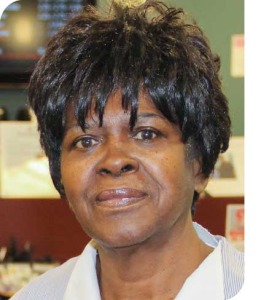 Edythe Lindsey
Edythe Lindsey
Kansas City University of Medicine and Biosciences
Edythe Lindsey grew up in Kansas City, Kan., in what she calls “a church family,” and first-class work ethic was part of that life. For nearly 52 years, she’s brought it to what is now the Kansas City University of Medicine and Biosciences, where she joined the custodial staff during the administration of Joseph Peach, at that time just the second president in the history of an institution that will celebrate its centennial next year.
Eleven other presidents have come and gone in the decades since, but Lindsey has remained a fixture at the campus on Independence Avenue, where she long finished one eight-hour shift, only to head off for another job. That was what it took, she says, for a single mother raising four children. “I kept two jobs and raised my kids,” Lindsey declares, “and they have never been on welfare or food stamps—
they didn’t have to ask nobody for nothing.”
But she’s also “adopted’ thousands of medical students from successive classes at the osteopathic college she’s come to know personally since October 1963. “I love them; I love them all,” says Lindsey, and the feeling is evidently mutual: In 2013, in recognition of her golden anniversary of service, alumnus Darin Haug and his wife, Sarah, established the Edythe Lindsey Physicians Hall of Sponsors Scholarship.
Throughout her career, “Edythe has provided faculty, staff and students with a humble example of the value the university hold so dearly,” said KCUMB spokeswoman Lisa Cambridge. “Her work ethic, loyalty genuineness, spirit and faithfulness are only a few of the qualities that make her special.”
What’s fueling the motor in the sixth decade at one job? “I just like to work,” Lindsey says. “When I retire, I’m just going to go and volunteer at one of these hospitals—I don’t know if it will be KU Hospital or Research, but I want just go and volunteer.”
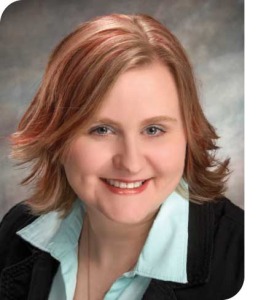 Amy Wiedmaier
Amy Wiedmaier
Mosaic Life Care
“I love to see other people getting fulfillment out of giving,” says Amy Wiedmaier, team leader for volunteer and auxiliary services at Mosaic Life Care. “Oscar Wilde said, ‘The smallest act of kindness is worth more than the grandest intention.’ It is so wonderful to see the smallest acts of kindness making a positive impact on our patients and their families. It is the small stories of life and death that the volunteers share that make this job incredible.”
Wiedmaier herself is no stranger to giving—in the past decade she’s given a lot. To the hospital, where she works full time; to her family, with the four children she and her husband Michael have had, and to her future, earning her MBA from William Woods while juggling those other duties. Born in Texas but raised in St. Joseph, she graduated from Missouri Western with a degree in business administration. Her first job at Heartland Regional Medical Center, now Mosaic, as volunteer coordinator “was a life changing position. I learned so much about people, community and my own life that I knew I had found the right place to be. When my supervisor left her position I was fortunate enough to be promoted.”
Essential to any successful volunteer program, she says, is connecting passion with purpose. “We find the right person and give them the right work,” Wiedmaier says. “We seek passion and inspiration, which creates support for our caregivers. … We treat our Volunteer Ambassadors as one of the team, because they are.” Perhaps nowhere was the power of such connections demonstrated than with the Pet Partners program, which she envisioned, built and secured funding for. Last year, a young patient with terminal bone cancer was getting daily visits from Jetta, a program dog. One day, after an unusually long, poignant visit, Jetta had to be pulled away from that patient, who died before the next day’s visit. “For our volunteer ambassadors to have such a meaningful impact on patients, to make their last hours on earth more peaceful, it is a gift,” Wiedmaier says.
Carol Perry
Stormont-Vail HealthCare
Health care would be the direction, but while she was still in college, Carol Perry had a choice to make: Physician or nurse? “I would have liked medical school,” she says, “but I didn’t want to go away” so soon after marrying her high school sweetheart. So nursing it would be. She took a job as a patient-care tech at Stormont-Vail, earned her degree from hometown Washburn University, and found that nursing “really cemented the fact that my heart and strengths were to serve others,” says Perry, now the chief nursing office and vice president for Stormont Vail HealthCare. “I knew I wanted to help others, and as I would go into the hospital and observe the struggles people had, my interest grew. That’s when I decided to get my master’s,” which she did through Baker University.
That commitment to education was instilled by her father, who made a high priority of seeing his four children attend college. “He worked hard to make it happen, and paid for us to go to school,” Perry recalls. “He expected us to go, and if we didn’t, we’d better tell him how we planned to make a living.” Her career has been divided between direct patient care as a high-risk obstetrics nurse and nursing administration, but each discipline held the same focus: “I can tell you that in health-care settings, people are at their most vulnerable, whether it’s the patient or their family,” Perry says. “Whether you’re having elective surgery, or having a baby, or you’re there because you have a family member in a horrible crisis, they’re sharing with you their most private, important information about their lives. The fact they trusted me and knew I cared and wanted to do everything I could to help them—that was the most important part about being a bedside nurse.”
As an administrator, “I am still very much involved in patient care from a family and communication perspective” and developing new programs, Perry says. “What I really try to do is make a difference in others lives by making them feel better about themselves in a difficult situation.”
Stacy Doyle
Children’s Mercy Hospital
In pediatric nursing, there are many happy endings. And those count for a lot. Especially weighed against the cases that don’t end that way.
Thankfully, says Stacy Doyle, those are the exceptions. The good days? “There are a lot of days like that, and that part is awesome,” says the senior director of nursing for emergency and urgent care at Children’s Mercy Hospital.
Even when the tears come, though, there can be fond, lasting memories. “I remember working in ICU, with a patient who was dying—a little girl with a chronic condition, whose Dad couldn’t be there with her.” Doyle filled in that night, staying at Mom’s side, helping with a bath and keeping spirits up. “She died right after I left,” Doyle says, “But it was such a fun night, she was awake and laughing—what an honor it was to be there and be a part of that.”
A Prairie Village native who earned a nursing degree at MidAmerica Nazarene University and an MBA at Avila, Doyle applies both the compassion one expects in a nurse with the business sensibilities one expects in an executive. Why an MBA? “I was going into nursing leadership at that time, watching where health care was going and all the changes in it,” Doyle says. “Changes in the business model and what it took to run a big busy area. I thought knowing about the business would be helpful in the long run. … To learn that and have clinical knowledge put me in a position to understand the business so we can support our mission.”
Having moved into more administrative roles, she now extends her nursing reach by managing others in that field. And as it turns out, she finds herself working at the same hospital where her mother had worked in the lab, and where Doyle herself had volunteered as a youth. “It’s kind of neat,” she says, “to work people who have known me since I was really young.”
Kim Dixon
University of Kansas Hospital
Successful nurses, says Kim Dixon, do not go it alone. Nursing today is about effective collaboration among the nurses, physicians, therapists, social workers, managers, executives and others who, she says, work with a singular focus on patient care delivery and the services provided in a care setting.
That’s part of the Clinical Practice Model she learned working with Bonnie Wesorick, a Michigan-based leader in health-care strategies. “Very early in my nursing career, Dixon says, “I learned how important it was to have all roles and disciplines collaborating when developing new services or working on improving current services with the focus always on the patient.”
The beneficiaries of her current collaborations check in for treatment at the University of Kansas Hospital. “With effective collaboration, you are able to bring teams together and work toward a common goal,” she says. “As the team develops and gains perspectives from other team members, creativity and innovation occur.” And that leads to more efficient processes and better patient care, Dixon says.
Growing up in Hamilton, Mo., population 1,809, she embraced the strong work ethic of her parents. Armed with a nursing degree from what’s now Truman State, and a master’s from Mizzou, she chose that line of work because “I always knew I wanted to go into a career that I would be able to help people,” she said. “Nursing allows you to make a difference in people’s lives and provide care for them and their families at some of the most vulnerable times in their lives.”
She’s currently director of the hospital’s Marc A. Asher, M.D., Comprehensive Spine Center, where, she says, she can continue a career-long love for starting up new service lines and patient care areas. “The joy in my day to day work,” she says, “comes about by bringing the teams together to collaborate and design high quality patient care services and seeing the teams ideas put into actions.”
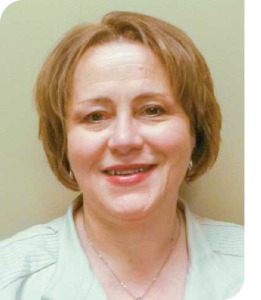 Ricci Wells
Ricci Wells
Saint Luke’s Hospital
There’s a reason why so many network TV shows use hospitals—and particularly their emergency and operating rooms—as settings for their story lines: The work really is charged with life-and-death consequences. Just ask Ricci Wells, a clinical nurse manager in the cardiovascular department at Saint Luke’s Hospital. As she wrapped up nursing school and went through clinical rotations, “I found that I like the excitement of the OR or ER setting, which is very task-oriented and has the satisfaction of completing tasks and seeing outcomes immediately,” she says.
Those settings also put under some of the greatest stresses they’ll ever face. Reflecting on her experience with patient care, Wells says she found professional fulfillment in “the many times I showed compassion and patience for a patient in the pre-op holding area, waiting to go into open-heart surgery and just making them feel comfortable during a very stressful situation.” A native of Great Bend, Kan., she has held various OR nursing roles, both in patient care and in nurse management, but almost all in the cardiovascular setting, including duties to set up the new cardiovascular operating room. Success there, she said, was grounded in the ability to be able to listen more than you speak. “Genuinely listen to all levels of staff as well as physicians,” she said. Another key: “Get in the trenches and live the day-to-day with the staff so you will know where there are concerns and how it impacts the department as a whole.” In her work, she finds the gratification that is commonplace among health-care providers who focus their energies on what happens to each patient. “I think daily my decision to go into nursing is validated when I think of the dedicated, highly skilled staff that continue to perform at Saint Luke’s and the quality of care we provide from my expectations as a manager,” she says. “When staff come to me concerned with a dilemma, my usual comment is ‘What is the best decision for the patient?’ This usually will solve anything when put in that manner.”
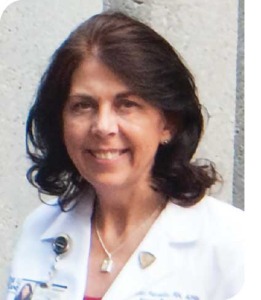 Lori Ranallo
Lori Ranallo
University of Kansas Hospital
Not many people get to nursing from a starting point in financial regulation, and it might not have happened for Lori Ranallo but for the personal loss incurred along the way. She was a liquidator for the Federal Deposit Insurance Corporation when her father was diagnosed with lung cancer in 1987. She took a leave of absence to help her mother with with his long and demanding care.
It was then, she said, that “I realized that I needed to help others. She started taking classes at Johnson County Community College and graduated from KU’s School of Nursing—six months after her father lost his battle. “Those experiences forever changed my life—I knew that I would work with cancer patients,” she says. “It was my calling.”
The answer to that call started in 1993 in the women’s surgical unit at the University of Kansas Hospital. In 1997 she joined the cancer center’s breast-cancer division, completed her master’s degree at KU in 2004 as a nurse practitioner, and continued to work in the breast-cancer division of the cancer center in surgical oncology, medical oncology and now with breast cancer survivors.
“I know that if I touch one person’s life, the way the nurses caring for my father touched me, then I have truly made a difference,” she says, adding that each day is an opportunity to assist someone at their most vulnerable moments. “Nursing is not a profession to me, it is a vocation,” Ranallo says. “It is the richest gift and a privilege.”
And yet, it’s a gift that can come with a cost. As with the woman who had a history of breast cancer, then was diagnosed with lung cancer. She participated in clinical trials, doing everything she could to survive. To no avail. “She came into the office one month before she died to tell me goodbye and thank me for taking such good care of her,” Ranallo remembers. “Wow: What a humbling experience. For her, even though she lost her fight, she felt I had made a difference.”
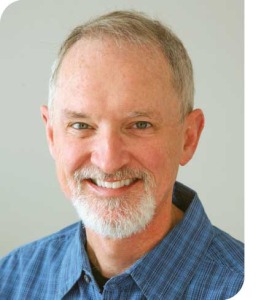 William White
William White
Associated Ophthalmologists / St. Joseph Medical Center
William White’s time in a pediatrician’s care was long ago, but nonetheless influential. “He was a kind man,” White recalls, “with a strong interest in the sciences and working with people, and he seemed to be one of the smartest people I was ever around. He was happy, well-balanced, all-around good person. It seemed the highest thing I could aim for was to be a doctor.”
The first in his family to go to college, prodded by his father, a mechanic at the TWA overhaul base in the Northland. “It always seemed like a bit of a pipe dream, but my parents encouraged me, and I got a lot of good breaks.”
He enlisted in the Army to help defray the costs of medical school, and during a stint at Fort Leonard Wood, his curiosity was piqued by meeting an ophthalmologist. He found the equipment fascinating as well, and a specialty track was born. That physician also introduced White to the concept of working overseas.
Reflecting on the 15 mission trips he’s been involved with, White said that “your first trip to the developing world shows you we’re blessed beyond our imagination as far as access and ability to get state of the art or good health-care delivery systems” in the U.S. “For me, one of the biggest things is realizing that the physician in global health is not at the top of the pyramid—it’s clean water, it’s sanitation, it’s a food source that’s not contaminated, and with enough caloric intake to maintain yourself.” His work now is focused each year on Haiti, the most impoverished nation in the western hemisphere. But he provides more than intensive eye care and helping organize construction of a clinic to serve remote areas of the island nation. “We work with the docs there,” he says. “Our goal is to work ourselves out of a job by training them so that they can support themselves.”
The mission field, he said, “is the only place where I’ve seen people starve to death. That changes you forever.”
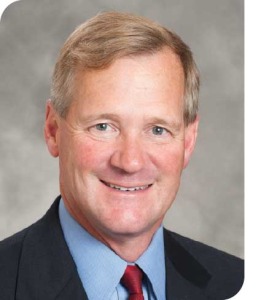 Doug Cusick
Doug Cusick
Shawnee Mission Health
It’s almost impossible to get a mental image of that 5-year-old’s medical plight, because the conditions that led to it are virtually unheard of in the United States: “She had sustained massive third-degree burns,” recalls Doug Cusick, whose skills in plastic and reconstructive surgery would be tested over the next four years would transform the life of that young patient in Romania.
“She had been burned at about 1 ears of age, and left in the crib,” Cusick recalls. That fetal position she had assumed years earlier left her chest wall and extremities fused as the burns healed. “I could see evidence of an elbow or wrist, or portions of fingers poking through the scar tissue,” he remembers. So he set about the long and painful process of freeing her from the prison her own body had made. It took four medical mission visits.
That’s an extreme example—but not by much—of what he’s run into in missions around the world, more than 40 of them to date, covering roughly 20 countries. A Kansas City native who attended Washington University with business finance his goal, he entered medical school almost on a whim, after seeing a long line of applicants at the university in St. Louis. When he heard that only one out of 11 would be accepted, he tought, “I’ll give that a try.”
He became intrigued with mission work through Adventist Health System, which owned the California hospital where he did surgical training, as well as Shawnee Mission Medical Center, where he’s affiliated through his plastic surgery practice. Backed by non-profits like the Medical Mission Foundation and the World Outreach Foundation, performs eight or more surgical repairs in a day.
“There is a great joy and benefit in helping people who will never receive that care unless you are there,” he said. “You don’t get that in the U.S., where health care is a routine part of what we have access to.”
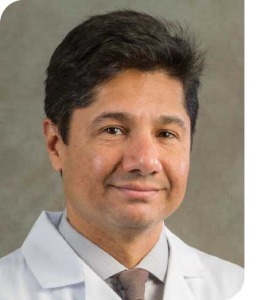 Gautam Desai
Gautam Desai
Kansas City University of Medicine and Biosciences
“I have seen first-hand the challenges of patients overseas who lack resources, particularly health-care resources,” says Gautam Desai, a physician who teachers at KCU. But, he said, “I have also seen how these challenges can be overcome by the work of a few determined people.”
That’s the framework for Desai’s affiliation with DOCARE International—he’s serving a two-year term as president of its board of directors—and other organizations promoting health-care delivery in underserved areas of the world. In far-flung corners of Africa and Central America, he’s been part of a small army of KCU volunteers who have treated an estimated 50,000 people over the course of 15 missions.
The plight of those living in substandard conditions is not an abstract concept for Desai. He knows that simple baselines—clean water, decent nutrition—can dramatically alter the health-care trajectory of an entire population. Without them, the individual consequences can be deadly. “A look at the causes of mortality in developing nations vs. developed nations reveals many preventable/treatable causes, such as infection, malnutrition, etc.,” he says.
He was born in Mudeti, India, and his family came to the U.S. when he was about 5 years old. “My father is a retired physician who brought us here, as he saw opportunities to improve our lives,”
Desai said.
And his grandfather “was a professor who influenced children in his village to study.” An aunt and various family friends also were physicians, but he initially resisted that influence when considering his own future. “I had to find my own path,” Desai said. “I thought long and hard before my decision and chose medicine as a field that was interesting and provided an opportunity to help people.”
Debra Bouchard
Village Care Center at John Knox
After 40 years of working for her country—first in the Army, then 38 years with the General Services Administration—Debra Bouchard was ready to do what she wanted to do. “I decided that doing volunteer work was in my future, and what better place to do it than providing any assistance I could with the elderly?” she said. If that’s your goal, and you live in Kansas City, it’s only natural to contact John Knox Village, the senior living center that is one of the nation’s largest continuing-care communities. It was a perfect match for Bouchard, who works in the 430-bed Village Care Center, a skilled nursing facility in Lee’s Summit.
“I work as a medical escort, accompanying residents to their medical appointments, assisting in various activities to include the weekly ladies spa day, visit with the residents and any other assistance I can provide,” says Bouchard.
A native of Caribou, Maine, deep in the north woods, she entered the military in 1972, and that’s still the proudest achievement of her life, she says. After that, her career took her to the nation’s capital, working with the General Services Administration’s National Security Program. She was transferred to Kansas City in 2000 and worked as an IT project manager, managing multi-million-dollar government contracts, mainly the Department of Defense.
“Some of the residents are without any family and the love and attention I provide to all of them puts that light back in their eyes and makes them happy,” Bouchard says. “Sometimes it is just sitting with them, giving them a hug, a smile, holding their hand and just letting them know that someone cares.
“The only thing I don’t like about it,” she says, “is that I really get attached to my people, and then it breaks my heart when they pass away. I know it’s the nature of working here, but it still hurts.”
Walter Entgelmeier
Olathe Medical Center
Walter Entgelmeier does a little bit of everything for Olathe Medical Center and other operations of Olathe Health System. As a member of the OMC Ambassadors, the hospital’s volunteer group, he was named Ambassador of the Year in 2014, and for good reason—you can find him filling in on a wide variety of needs that make him more an operations specialist than a meet-and-greet volunteer.
For nearly 18 years, Entgelmeier has been a fixture in the hospital’s distribution center, at one of its local physician clinics or with fundraising efforts—all told, 7,842 hours of volunteer services since he pulled his first shift there in 1997.
He leverages that time commitment with a versatility that allows the hospital to plug him into many different roles. Take, for example, his work in the hospital’s print shop, or near the deliveries dock, helping unload and organize medical supplies. Or working at another system property, Arbor Creek Family Care, where he’ll take on clerical duties with filing, or maintaining cleanliness of the clinic, inside and out.
He assists with fund-raising efforts for the Ambassadors by overseeing nut and candy sales at the hospital, and that money supports the organization by contributing to scholarships for nurses who need financial assistance to pay for their continuing education.
“He’s friendly to all customers, and is always willing to complete any task given to him,” says Tara Flackus, the hospital’s volunteer services manager. “A volunteer is someone who works of their own free will, and without monetary reward, to benefit the community. Walter goes above and beyond in his role as a volunteer because he truly cares about people, about the Olathe Medical Center and about making a difference.”
Dixie Briebeck
North Kansas City Hospital
Nearly 31 years ago, Dixie Briebeck lost her husband, but she was determined not to go forward alone.
“When my husband passed away in 1984, I felt like I had been left here for a reason, and that was to serve,” she says. “So I started to volunteer at North Kansas City Hospital, Nearly New and Shepherd’s Center. Volunteering makes me feel good: I have a reason to get up in the morning.” At the hospital, where she’s one of the most experienced volunteers, she works the first and third Saturday and Sunday each month on a four-hour morning shift, and if the month breaks that way, she’ll work the fifth Saturday/Sunday weekend, as well. That’s in addition to first and second Mondays of the month in the late afternoon and evening, plus shifts of five hours Tuesday through Friday.
As if that weren’t enough, she works a 6-hour shift once a week managing the crafts sales at Nearly New, a shop that sells donated items and distributes profits to various Northland charities.
She’s a Claycomo native who worked as a church secretary, then became assistant registrar at Midwestern Baptist Theological Seminary, where she was in charge of recording grades and keeping transcripts up to date and making sure students remained on an academic track for graduation.
“Dixie unselfishly assumes responsibilities without being asked, takes on extra shifts and even tackles computer issues,” says hospital spokeswoman Amy Schemenauer. What she does is a simple thing, really, Briebeck says: “People need a friendly hello. Just last week, when a woman was leaving, I said ‘Good-bye and have a good day.’ The lady stopped and recognized that she had been in a lot of hospitals and hadn’t received that type of a friendly greeting. It makes me feel good. … I just want to do everything I can to help people and do what needs to be done. I really don’t have
a bad day as a volunteer. The 29 years here have gone by so quickly and I’m grateful for the opportunity to volunteer here.”
More than 60 years later, Joe Waeckerle still remembers it. “There are few things I remember in my old age,” he quips, but “but I remember talking to my mother about what doctors do. She said doctors help people, and
I said that’s what I wanted to do. Since the ripe old age of 5, I wanted to be a doctor.”
But this Kansas City native has been more than just a doctor, and his impressive body of work affirms his declaration that “I’m a God and country kind of guy.” Waeckerle did his undergrad work at KU, then went to Mizzou for his medical degree. The most important part of his instruction, he says, came early, in Catholic school—he’s still team physician for his alma mater, Rockhurst High. What he learned then left an impression. “I was educated by the Jesuits, and it was the most influential education of my life,” Waeckerle says. “The Jesuits take it seriously, and I don’t know how else to say it, but you learn to give back as much as receive, if not more.”
He’s had a huge and varied role in the development of emergency medicine and emergency-response policy, in Kansas City and nationally, as well as sports medicine. He’s served as a medical consultant to the FBI, medical officer for the Kansas City police and Homeland Security, and taught special-operations tactical medicine. He also has held eight different medical appointments and just as many academic appointments, and earned more than three dozen awards and honors for medical excellence, teaching excellence and service above and beyond the call.
All of which mean slightly more than bupkis to Waeckerle.“My greatest accomplishment is the last person I helped,” he says, “It sounds corny, but that’s where I am in my life. I just don’t think about things like that. It’s nice to get awards, it’s wonderful to be recognized in the community, but in the end, we all answer to one Man. So just do the right thing and do your best, be your best, and things will come to you as they should.”
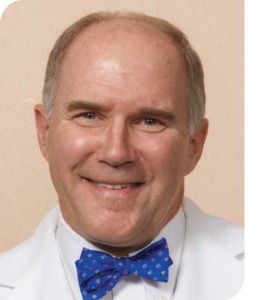 Ted Higgins
Ted Higgins
Kansas City General and Vascular Surgeons
He’s had a stellar career as a surgeon, he’ll be 66 this year, and he’s got an artificial hip. So where does Ted Higgins go this month for a little R&R? Riding helicopters around the Caribou Mountains in northern British Columbia, looking for unspoiled snowpack with his skiing buddies.
“I’ve been happy as a surgeon; I love what I do,” Higgins said just before heading to Canada. “I don’t see myself stopping. When the physical elements start to creep in, somebody may say, ‘Hey, he’s had enough,’ but at this point, It’s still fun to go to work every day.”
Higgins, whose practice is affiliated with the HCA Midwest Health network, is a fourth-generation doctor raised in update New York. “My father (Ted Sr.) was a wonderful brain surgeon who worked in academia for a while,” Higgins said, “but when his dad died, it was time for him to come home to run the office.” But for marrying a young lady from Kansas City, Ted Jr. might have expected to receive a similar intergenerational summons. “Dad said, ‘Go set your own path; that was nice to hear from your dad,” and he was soon KC-bound.
His training connected him with some of the biggest names in surgery, including the world-renowned heart surgeon Michael DeBakey and Hastings Wright of Yale. “I had great role models—these were titans, and it was a thrill to learn from them,” Higgins said. “They were pioneers, doing it when no one else would.”
His eagerness to learn burns on. “I still have more to learn and more to do,” he said, as with mission work in Haiti and the Dominican Republic, where he’s made trips for 20 years. “We were operating there initially, then teaching some of their surgeons,” he says. With more of that in store, and plenty remaining through his practice, Higgins sums things up thusly: “It’s been a good ride, and I consider myself lucky. Health-wise, I’ve held up … other than that hip.”
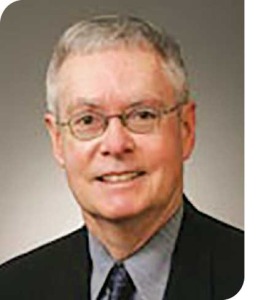 Paul Wheeler
Paul Wheeler
Northland Ob-Gyn/Liberty Hospital
More than 35 years have passed since obstetrician Paul Wheeler received his appointment to the staff of Liberty Hospital, and in the intervening decades, he’s had a chance to touch thousands of new, little lives, and plenty of his colleagues’ lives. The result has been decidedly positive, as his medical peers and other health-care professionals are quick to attest:
• “Dr. Wheeler has been the anchor at Northland Obstetrics & Gynecology for 37 years and is still going strong,” says Karen Bodner, the medical practice’s administrator. “He definitely is an unsung hero in medicine because he is not flash and doesn’t boast on his skills and accomplishments; he just continues to provide exceptional and compassionate care to his patients and serves as a mentor to his partners.”
• Throughout his entire career, he has provide exceptional care to his patients,” said Ward Ohlhausen, a Northland physician.
• “Dr. Wheeler is the ‘voice of reason’ when it comes to running our practice and creating a culture that puts patient care first,” says Kent Tegeler, another Northland doctor.
• Still another, Mary Clare Reardon, said “Dr. Wheeler brings wisdom and serenity to the most chaotic and unsettling issues that plague medicine in the 21st century.
That uniform level of high praise comes for a man who has served as president of the hospital’s medical staff and president of its executive committee, been a Fellow of the American College of Obstetricians and Gynecologists since 1981, and has memberships in the Clay-Platte County Medical Society, the Missouri Medical Society and the Kansas City Gynecological Society. Although he gave up delivering babies and surgery after turning 60, he remains a powerful influence in the clinic, at the hospital, and for health care in the Northland.